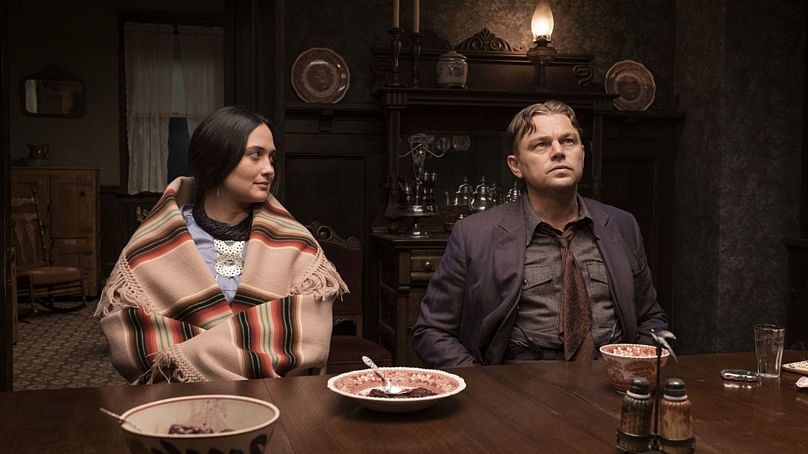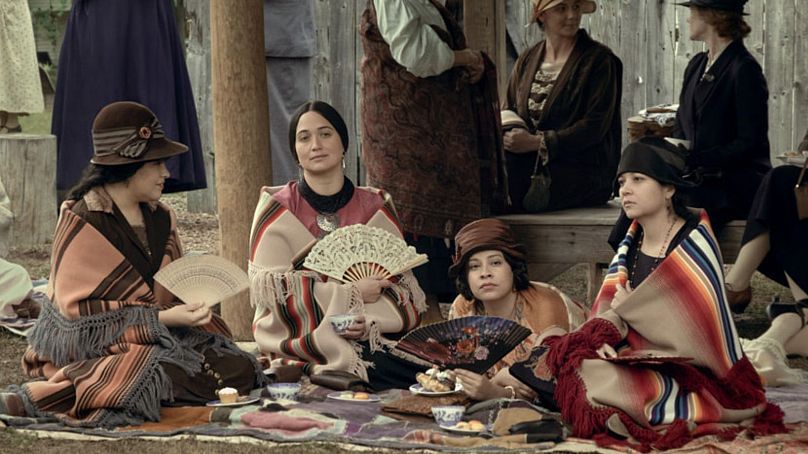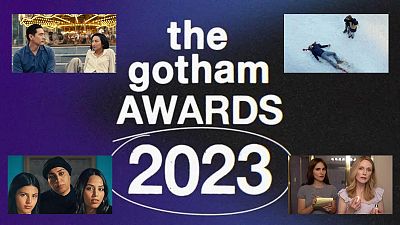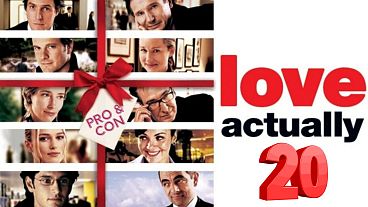Martin Scorsese is back with a fascinating but uneven American reckoning that can't quite justify its runtime.
Adapted from the bestselling 2017 non-fiction book “Killers of the Flower Moon: The Osage Murders and the Birth of the FBI” by David Grann, Martin Scorsese’s new film tells the true story of exploitation and the decimation of the Indigenous people of America by those hellbent on taking their wealth through inheritance.
Our entry point into the story is the malleable and rather dim-witted Ernest Burkhart (Leonardo DiCaprio), who has just returned from World War I to his uncle's ranch in Oklahoma. His uncle, William “King” Hale (Robert De Niro), wields power in the community and seems to be an ally to the Osage people. Beneath this façade, however, is a cruel man who will do anything to place his pawns on the chessboard and architect a series of murders to ensure that the Osage nation and their oil-rich land don’t slip out of white hands. The slippery bugger orchestrates this malicious profiteering by either encouraging white men like Ernest to marry into the Osage community to conveniently become inheritors of great wealth (the “headrights”) or go directly for murder most foul.
After all, this is a place where you’re “more likely to be arrested for kicking a dog than you are shooting an Indian”.
Unbeknownst to Ernest, King's scheme is already underway – and at its centre is Mollie Kyle (Lily Gladstone), a member of the Osage people who has become part of wealthiest Americans per capita... And therefore, a vital target to be exploited.
Clocking in at 206 minutes (just three minutes shorter than The Irishman), there’s simply no denying that Killers of the Flower Moon is far too long. Granted, the runtime feels appropriate in order to chronicle an epic of this magnitude, but the pacing in the tedious first act is punishing. Engagement does pick up in the middle section and by the end of it - specifically with a playful and cameo-laden radio show epilogue that injects some of Scorsese’s dry sense of humour - you’re hooked. Add Rodrigo Prieto’s immersive cinematography and timely echoes to contemporary capitalist exploitation at the expense of any and all suffering, and some of the film’s unevenness can be forgiven.
Still, had Marty shaved off an hour, the end result would not have felt so lopsided, and not left the audience feeling like they had also been subjected to a prolonged paddle spanking like the one Bobby D administers to Leo at one point in the film.
Killers of the Flower Moon ’s runtime is also partly redeemed due to the cast giving it their best, with Gladstone shining brightest as Mollie, a confident and stoic woman central to a twisted love story. She gives this Western Chinatown its beating heart, and hopefully, her performance will be rewarded come awards season. As for De Niro, he delivers some his best work in years as the spiritual ancestor of his Al Capone in The Untouchables. So far, it seems like a two-way race between him and Robert Downey Jr. in Oppenheimer for Best Supporting Actor.
Then comes DiCaprio, who is a bit more hit and miss here; his gurning and dental prosthetics make him look like a scrubbed-up gargoyle and the act tends to get a bit old by film’s end. It makes you wish more screen time could have been given to the perfectly cast Gladstone, who manages to convey volumes of strength and agony with minor gestures that hide behind a strong-willed carapace.
Part of the reason Gladstone’s Mollie isn’t given more is that Scorsese and scriptwriter Eric Roth shift focus from the ‘Birth of the FBI’ part of the book’s title and have chosen to focus less on the investigation but more on the avaricious men behind the massacres. This is not the conspiracy thriller it could have been but rather another portrait of America’s original sin, to better show the self-mythologizing plaguing the present - much like in Gangs of New York and, later on, The Wolf of Wall Street. This works, but while it’s admirable to have eliminated the ‘whodunnit’ aspect and not to have taken the perspective of the FBI coming in to save the day, there’s still some mild disappointment that the film arrives at the same place by following the white perpetrators. Turning the lens on them to challenge the wider complicity of the US is bold, but the Osage community often feel reduced to glorified extras and corpses.
As it stands, Killers of the Flower Moon is an impressive achievement and a masterfully told story about greed and the US’ genocidal conspiracy that has had far-reaching consequences on American history. In telling the plight of the prey-upon Osage tribe, the film’s commitment to both historical and cultural accuracy is to be applauded.
But is it one of this year’s best movies, as many will be trumpeting? Perhaps not. Even after a rewatch, it does stand as a sporadically excellent reminder that long and epic aren’t always synonymous.
Killers of the Flower Moon premiered at this year's Cannes Film Festival and is out now.
